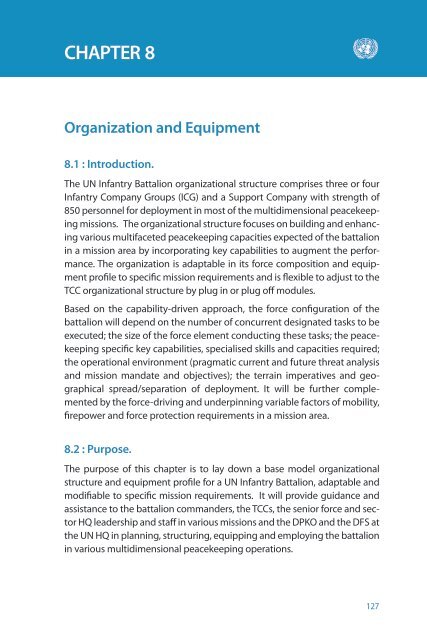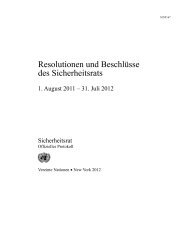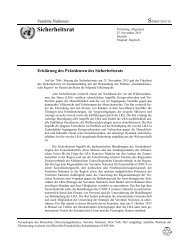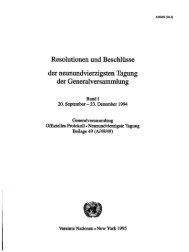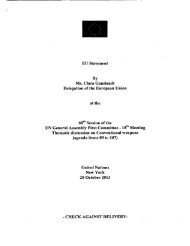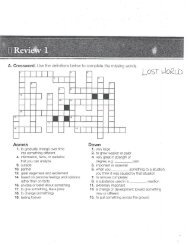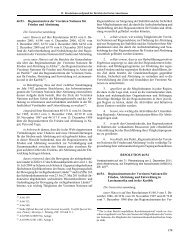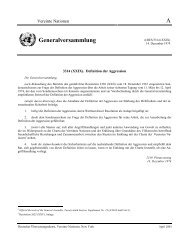United Nations Infantry Battalion Manual - the United Nations
United Nations Infantry Battalion Manual - the United Nations
United Nations Infantry Battalion Manual - the United Nations
Create successful ePaper yourself
Turn your PDF publications into a flip-book with our unique Google optimized e-Paper software.
CHAPTER 8<br />
Organization and Equipment<br />
8.1 : Introduction.<br />
asdf<br />
The UN <strong>Infantry</strong> <strong>Battalion</strong> organizational structure comprises three or four<br />
<strong>Infantry</strong> Company Groups (ICG) and a Support Company with strength of<br />
850 personnel for deployment in most of <strong>the</strong> multidimensional peacekeeping<br />
missions. The organizational structure focuses on building and enhancing<br />
various multifaceted peacekeeping capacities expected of <strong>the</strong> battalion<br />
in a mission area by incorporating key capabilities to augment <strong>the</strong> performance.<br />
The organization is adaptable in its force composition and equipment<br />
profile to specific mission requirements and is flexible to adjust to <strong>the</strong><br />
TCC organizational structure by plug in or plug off modules.<br />
Based on <strong>the</strong> capability-driven approach, <strong>the</strong> force configuration of <strong>the</strong><br />
battalion will depend on <strong>the</strong> number of concurrent designated tasks to be<br />
executed; <strong>the</strong> size of <strong>the</strong> force element conducting <strong>the</strong>se tasks; <strong>the</strong> peacekeeping<br />
specific key capabilities, specialised skills and capacities required;<br />
<strong>the</strong> operational environment (pragmatic current and future threat analysis<br />
and mission mandate and objectives); <strong>the</strong> terrain imperatives and geographical<br />
spread/separation of deployment. It will be fur<strong>the</strong>r complemented<br />
by <strong>the</strong> force-driving and underpinning variable factors of mobility,<br />
firepower and force protection requirements in a mission area.<br />
8.2 : Purpose.<br />
The purpose of this chapter is to lay down a base model organizational<br />
structure and equipment profile for a UN <strong>Infantry</strong> <strong>Battalion</strong>, adaptable and<br />
modifiable to specific mission requirements. It will provide guidance and<br />
assistance to <strong>the</strong> battalion commanders, <strong>the</strong> TCCs, <strong>the</strong> senior force and sector<br />
HQ leadership and staff in various missions and <strong>the</strong> DPKO and <strong>the</strong> DFS at<br />
<strong>the</strong> UN HQ in planning, structuring, equipping and employing <strong>the</strong> battalion<br />
in various multidimensional peacekeeping operations.<br />
127


